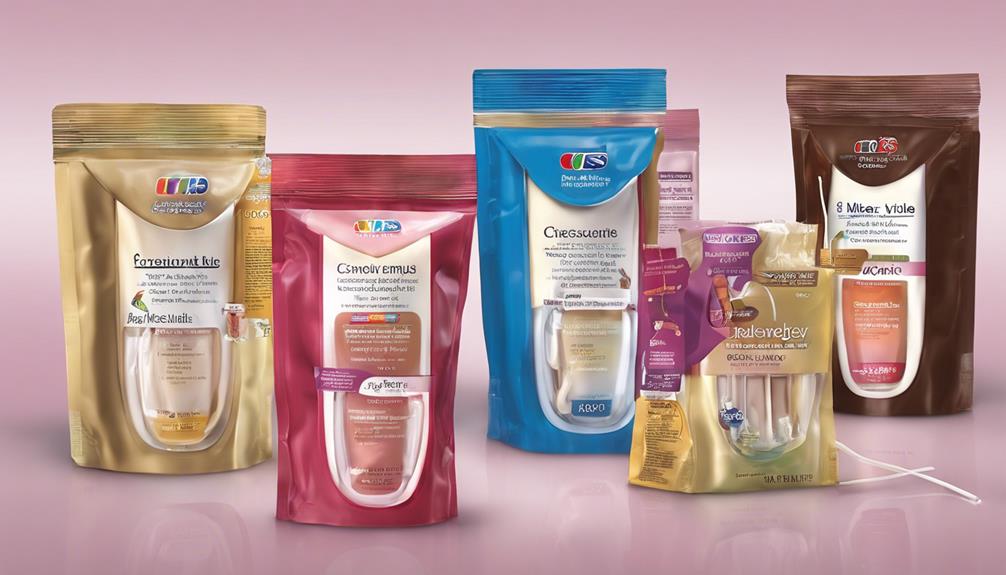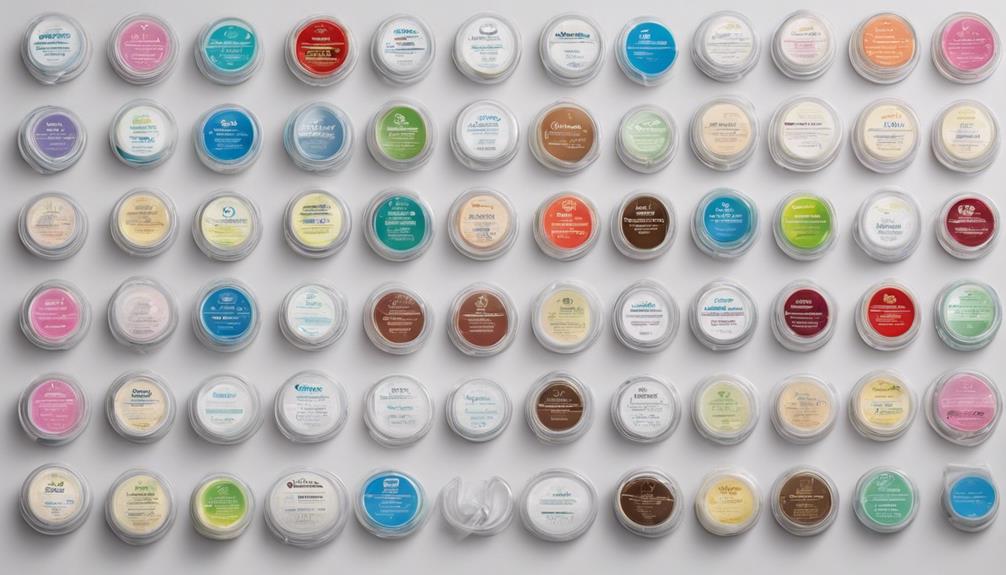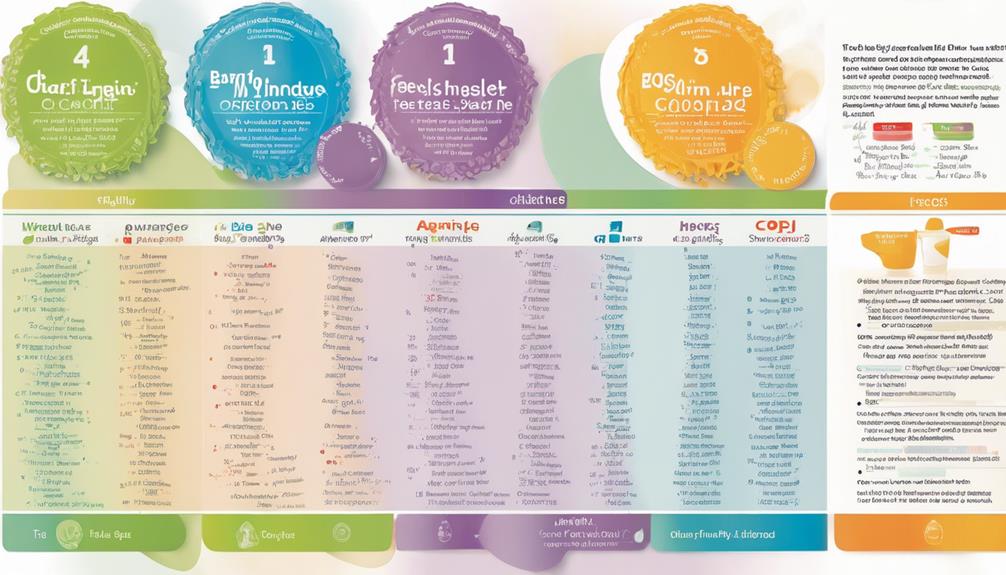Selecting the correct feeding tube formulas is essential, as the saying ‘you are what you eat’ still holds true. Yet, the challenge lies in determining how to navigate the numerous options to find the ideal choice for each unique situation.
Well, let's just say that the key lies in understanding the intricate balance between nutritional requirements, taste preferences, and medical considerations.
So, what exactly should we be looking for when it comes to choosing the best feeding tube formula brands? Stay tuned to uncover the essential factors that can make all the difference in ensuring the best nourishment and care for individuals requiring enteral feeding.
Key Takeaways
- Consider nutritional content, flavors, specialized formulas, and cost when choosing feeding tube brands.
- Patient preferences and medical conditions influence formula selection for optimal outcomes.
- Healthcare providers assess tube compatibility and patient needs for effective enteral nutrition management.
- Collaboration with the healthcare team is essential to navigate financial concerns and ensure nutritional adequacy.
Evaluating Nutritional Content
When evaluating the nutritional content of feeding tube formulas, it's important to take into account the caloric value, macronutrient sources, and micronutrient composition to guarantee complete support for the patient's nutritional needs.
Enteral nutrition formulas come in various caloric contents ranging from 1.0-2.0 kcal/mL, ensuring patients receive essential energy.
Carbohydrates in these formulas, offering 4 kcal/gm, are typically sourced from sugars like sucrose or fructose, providing necessary fuel for the body.
Proteins, also at 4 kcal/gm, are derived from sources such as milk protein or soy protein, critical for tissue repair and growth.
Fats, providing 9 kcal/gm, come from oils like canola or safflower oil, contributing significantly to energy needs.
Micronutrients in these formulas meet 100% of adult Dietary Reference Intakes (DRIs), ensuring that patients' overall nutritional requirements are adequately supported with essential vitamins and minerals.
Assessing Flavor Options

To better accommodate individual preferences and enhance patient satisfaction, feeding tube formula brands offer a diverse range of flavor options, including popular choices like vanilla, chocolate, strawberry, and unflavored varieties. When evaluating flavor options for feeding tubes, consider the following:
- Variety: Some brands provide unique flavors like tropical fruit, coffee, or dessert-inspired options, adding variety to the feeding regimen.
- Patient Compliance: Flavor options can play a vital role in improving patient compliance with tube feeding regimens, as individuals are more likely to adhere to their prescribed diet when they enjoy the taste.
- Tolerance: Taking into account the patient's flavor preferences and tolerance levels when selecting feeding tube formulas is crucial. Ensuring that the flavor is well-received can significantly enhance the overall patient experience during tube feeding.
Considering Specialized Formulas
In considering specialized formulas for enteral nutrition, healthcare providers tailor their selections to address specific medical conditions and nutritional needs of patients. These specialized formulas, like Glytrol® and Diabetisource® AC, are formulated to assist with glycemic control in diabetes or renal support.
For patients with kidney disease or those requiring higher protein intake, options such as Novasource® Renal and Impact® Peptide 1.5 are available. Tolerex® stands out as an easily digestible formula suitable for individuals with malabsorption problems or GI sensitivities.
These formulas contain specific macronutrient and micronutrient profiles to address the unique nutritional requirements of patients with distinct health conditions. Healthcare providers must carefully evaluate the patient's medical history, nutritional needs, and tolerance levels when selecting specialized formulas to ensure optimal management.
Reviewing Cost Factors

Considering the financial implications of specialized enteral formulas is important for ensuring practical and sustainable care for patients. When reviewing cost factors related to feeding tube formulas, it's vital to keep in mind the following:
- Insurance Coverage: Understand that insurance coverage for specialty formulas varies by state and may not fully cover the expenses. Checking with your insurance provider can give you clarity on what costs will be covered.
- Medicaid Assistance: If you or your loved one is covered by Medicaid, note that this program typically covers enteral formulas if deemed medically necessary. Explore this option to alleviate some financial burden.
- Healthcare Team Consultation: Discussing cost concerns with your healthcare team is essential. They can provide insights into selecting an affordable and suitable formula that meets your nutritional needs while considering the financial aspect to ensure accessibility and sustainability. Working together with your healthcare team can help navigate the financial landscape of enteral formulas effectively.
Ensuring Compatibility With Tube Type
When selecting a feeding tube formula, it's essential to confirm compatibility with the specific type of tube in use. Different feeding tubes require specific enteral formulas to guarantee ideal digestion and absorption. Standard formulas work well with direct stomach tubes, while intestinal tubes may benefit from peptide or elemental formulas.
Peptide formulas contain partially hydrolyzed proteins, aiding digestion in certain tube types, while elemental formulas are fully hydrolyzed, suitable for tubes with digestion issues or intolerance to standard formulas. Choosing the right formula based on the feeding tube type is critical for proper nutrient delivery and to minimize complications related to the medical condition or digestive system.
Registered dietitians can provide guidance on selecting specialty formulas tailored to specific needs, such as metabolic abnormalities or amino acid requirements. Ensuring compatibility between the feeding tube and the formula used is key to supporting overall health and well-being in individuals dependent on tube feeding.
Frequently Asked Questions
How Do I Choose a Tube Feeding Formula?
When choosing a tube feeding formula, we carefully consider the patient's medical history, metabolic issues, and GI function. Standard formulas like Isosource® HN and Nutren® 1.0 are usually suitable for most patients.
Specialty formulas such as Peptamen® or Glytrol® are reserved for specific medical conditions and need justification.
Monitoring tolerance and adjusting the formula as necessary is essential for best nutrition and patient well-being. Consult healthcare professionals or dietitians for personalized guidance on selecting the best formula.
What Are the 4 Types of Enteral Formulas?
When it comes to enteral formulas, there are four main types:
- Standard formulas for normal digestion.
- Peptide-based formulas that are easier on the stomach.
- Elemental formulas fully broken down for those with intolerances.
- Specialized formulas that address specific conditions.
Each serves a unique purpose tailored to different medical needs. It's important to choose the right type based on individual health requirements.
Which of the Following Factors Are Considered When Selecting an Enteral Formula?
When selecting an enteral formula, we consider factors like age, fluid status, GI function, food allergies, and diet preferences. Most patients can handle standard formulas, but specialty ones need medical justification and may impact costs. We look at institutional guidelines and explore alternative options when needed.
Information on formulas is available from company websites, HCPCS codes, and claims review. Remember, the ASPEN guidelines don't endorse specific brands and aren't a substitute for professional advice.
What Are the Different Types of G Tube Formulas?
When it comes G tube formulas, we've various options as Standard formulas like Isosource® HN and specialty formulas like Peptamen® cater different needs.
For those requiring fully broken down options, elemental formulas such as Vivonex® RTF are available.
Compleat® Pediatric with real food ingredients is great for kids, and home-prepared options using Compleat® allow customization.
Specialized formulas like Diabetisource® AC and Tolerex® meet specific dietary needs.
Conclusion
Opting for the best feeding tube formula brands is like finding the perfect recipe for nourishment and well-being. By carefully evaluating nutritional content, considering flavor options, exploring specialized formulas, reviewing cost factors, and ensuring compatibility with tube type, you can provide the best nutrition for your loved one.
Remember, just like creating a delicious meal, selecting the right formula is a blend of science and art that can make a world of difference in their health and happiness.









